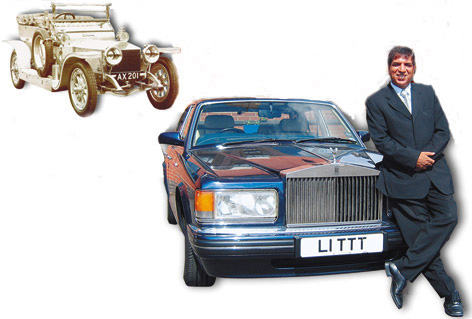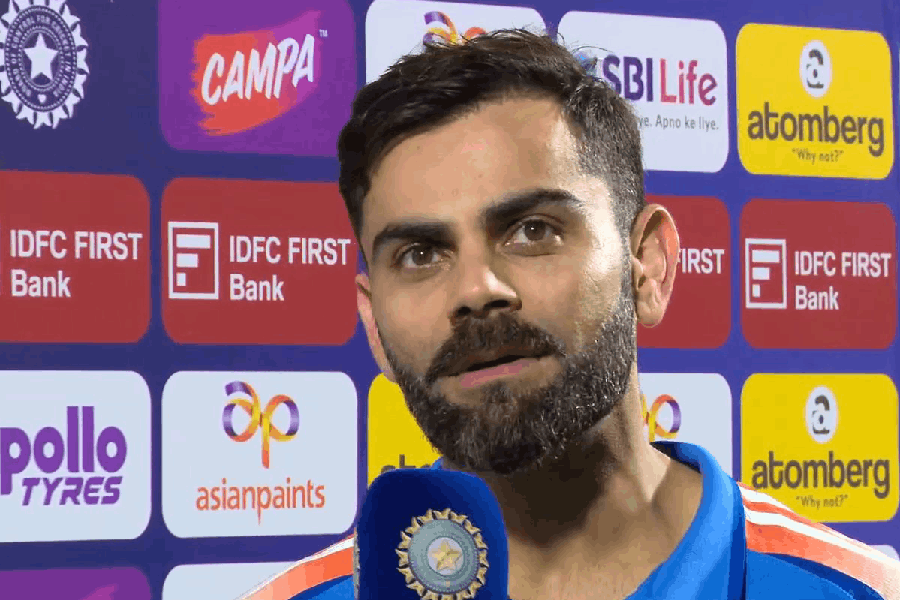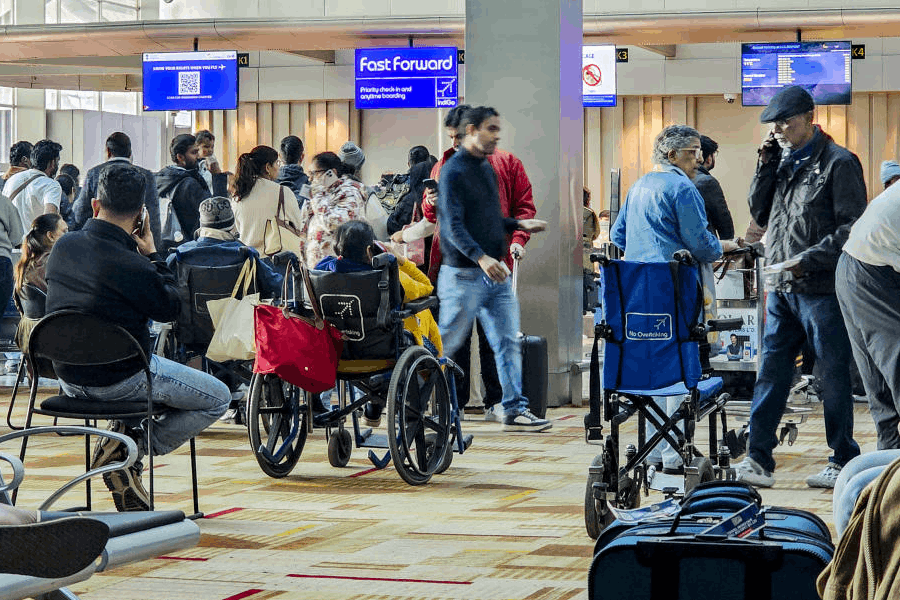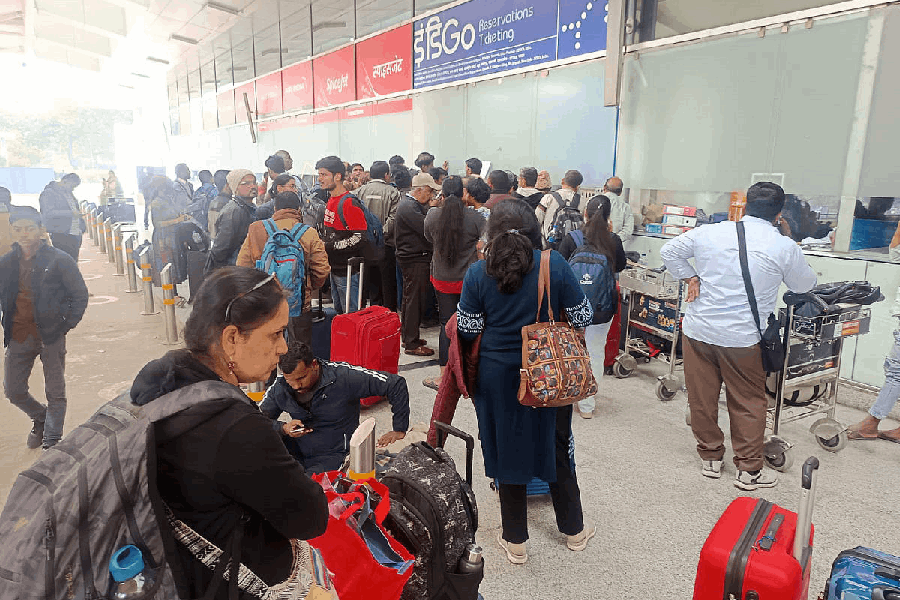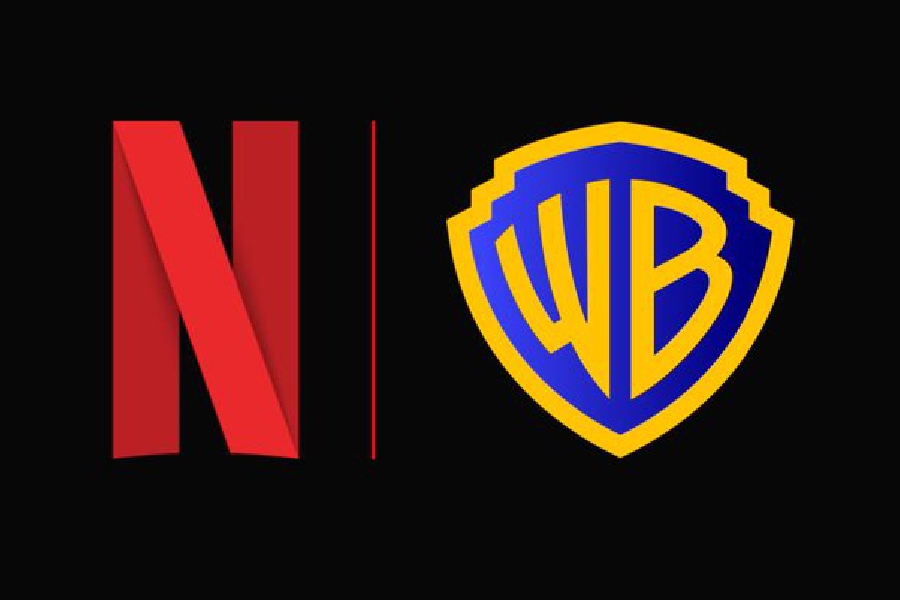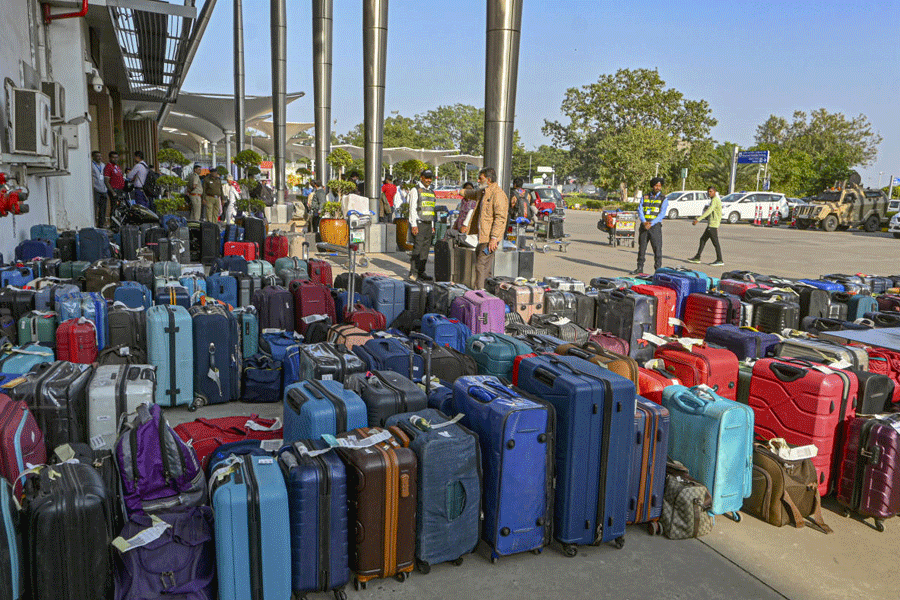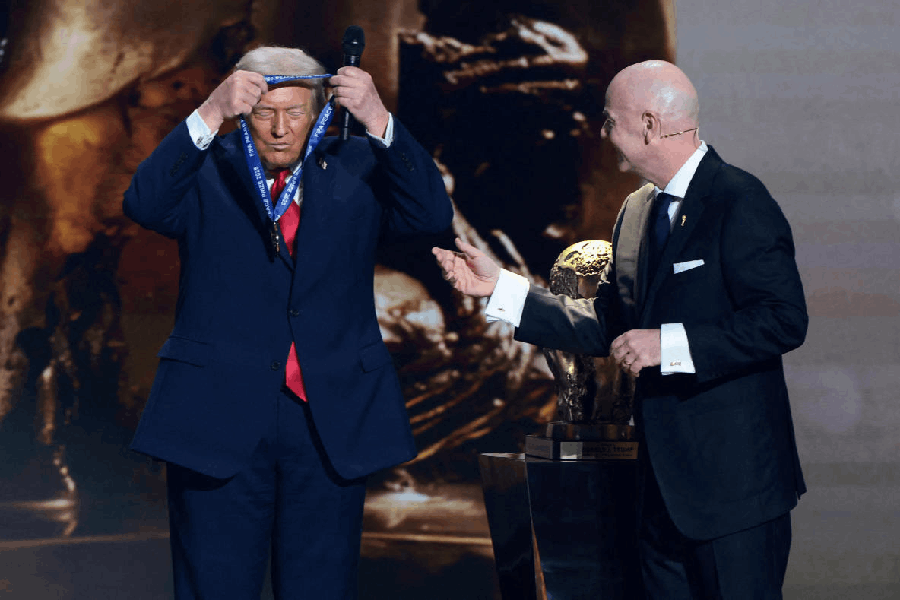 |
| OLD FAITHFUL: A vintage model (left); radio station chief Avtar Lit with his nine-year-old Rolls |
What could be more British than Rolls-Royce, the motor company which is considering marking its centenary this year by opening a dealership in India? This does not surprise Avtar Lit in the least.
“The Rolls-Royce,” he says cheekily, “is very much an Indian car”. Lit, the flamboyant chairman of Sunrise, an Asian radio station in London, who comes to work every day in his Rolls-Royce Silver Spirit III, has got a point.
Over the past century, the luxury car has been the ultimate status symbol for royalty (Queen Elizabeth, Princess Grace of Monaco, the Shah of Iran, the Sultan of Brunei), heads of state (Woodrow Wilson, Leonid Brezhnev), film stars (Frank Sinatra, Peter Sellers, Brigitte Bardot) and captains of industry too numerous to mention.
Rolls-Royce entered the English language as representing excellence almost from the beginning on May 4, 1904. That was when Charles Stewart Rolls (1877-1910), an English aristocrat (Eton and Trinity College, Cambridge), and Frederick Henry Royce (1863-1933), a brilliant engineer from a modest background, met at the Midland Hotel in Manchester and decided to go into partnership to produce a new car called the Rolls-Royce.
Though BMW bought the company in 1998, the Germans are seeking to honour Henry Royce’s guiding philosophy: “Strive for perfection in everything you do. Take the best that exists and make it better. When it does not exist, design it.”
Even Rolls-Royces discarded in garages in India can be restored despite decades of neglect. The British can truly be proud of Rolls-Royce’s tradition. In 1991, it was estimated that of the 1,13,000 Rolls-Royces which had been sold until then, a staggering 85 per cent were still either on the road or functioning.
However, had it not been for the maharajahs, who bought hundreds of Rolls-Royces and usually had them customised at vast cost for hunting tigers and other eccentric requirements, the company might well have gone out of business a long time ago.
Today, as Rolls-Royce seeks a new market, Indians are riding to the rescue again. Back in the 1980s and 1990s, Rolls-Royce went through a bad time when large UK companies got rid of their corporate symbols of privilege. Chairmen and senior directors of British companies replaced their Rolls-Royces with Jaguars or similar cars because they did not want to be seen being driven in opulence when British firms were sacking employees to reduce costs.
Much the same situation obtained at BP and other large companies. However, Indian businessmen, whose firms are family owned, have no such inhibitions. In many cases, Rolls-Royce owners have saved money by keeping the same car for decades. In such circumstances, heads of family-owned Indian firms, who have made their money from trading, garments, manufacturing and ethnic businesses, have assumed disproportionate importance as buyers of Rolls-Royces.
Lit, who bought his Rolls nine years ago for £75,000 and flaunts the number plate “LITTT”, admits: “Personally, I love driving it. It’s still eye-catching and my foreign guests love being driven in it. Even if I used a Mercedes for them, it would not have the same sort of prestige.”
The former British High Commissioner in Delhi, Sir Rob Young, once spoke of his attachment to the mission’s Rolls-Royce Silver Spur III. “There is no automobile marque better known world-wide than Rolls-Royce,” he commented with understandable pride. “I think it is a prestigious and exciting way of flying the flag in Delhi. Everyone recognises the car, where it comes from and therefore where I come from.”
Lit’s love affair with the Rolls has cooled slightly following the German take-over of something that represented quintessential upper-class England. “It’s not the same gut feeling which was there before,” he laments.
To be fair to BMW, it has retained an entirely British workforce, built a modern plant in Britain in Goodwood, Sussex, and put in the massive investment required to build a new model — the £252,000 Phantom — “from the ground up”.
But would there be buyers in India for a car, however superior, that costs Rs 2 crore before tax? “There is definitely a market for Rolls in India,” insists Lit. “I can see 200 to 300 cars being sold straightaway.”
Some wealthy Indian businessmen have kept two Rolls-Royces — one in London and another for use in India. One of them is Dr Kartar Lalvani, who used his Rolls-Royce whenever he popped over from London to Bombay in the 1980s. One new five-star hotel tried unsuccessfully to seduce him away from his usual establishment by offering him a discount. “They said it would look good to have a Rolls parked in front,” recalls Lalvani, the current “Asian of the Year” whose company, Vitabiotics, manufactures vitamin pills.
In London, Lalvani began with a Silver Spirit, bought the Silver Seraph five years ago and upgraded to the latest version of the latter 18 months ago, with a personalised number plate (a must-have for Indians). “I like driving it but sometimes when I go to a party where the circumstances are modest, I do feel embarrassed. The Rolls then seems so ostentatious.”
One businessman, Naresh Patel, of the Europa supermarket chain, got rid of his Rolls-Royce “because (envious) people would scratch it if I left it parked on the road”.
The fact is many Rolls-Royce owners have saved money by keeping the same car for decades. Among them is Pasha Sahgal, maternal grandfather of Amit Bhatia who has just married Lakshmi Mittal’s daughter, Vanisha, in France. Sahgal, who loves his white Rolls-Royce, says: “I have clocked up only 26,000 miles in 50 years.”
One of Mittal’s guests, Yogesh Mehta, a businessman who helps corporate clients move all their belongings from one country to another, cut a dash because he had the foresight to take his Rolls-Royce Silver Seraph to France. This is his fourth Rolls-Royce.
“I had three Silver Spirits before I bought my Silver Seraph four years ago,” discloses Mehta. “In 20 years I have never had a breakdown.”
Asked to list Indians in Britain who have Rolls-Royces, he begins with Nirmal Sethia, a businessman who threw an engagement party for Vanisha Mittal and Amit Bhatia at Annabel’s, the London night club. “Frankly,” comments Mehta, “I don’t know who doesn’t have a Rolls-Royce.”
Sir Gulam Noon, who produces millions of packets of chilled Indian meals for sale through Sainsbury’s and other supermarkets, has a Bentley, the brand which was once also owned by Rolls-Royce motor cars but is now under separate Volkswagen management. The cars were similar in construction except that the Rolls-Royce was distinguished by its entwined “RR” logo, its “Spirit of Ecstasy” sculpture on the bonnet and its claim to be the “Pride of Britain, envy of the world”.
“In my mind, the cars are the same,” reflects Noon. “The Bentley is a driver’s car while the Rolls-Royce is more for the chauffeur-driven — and I would not like to be accused of being a pompous ass.”
He and others offer a long list of Indians in Britain who are known to have Rolls-Royces, among them Lakshmi Mittal and the Hindujas (who keep theirs garaged apparently, except for ferrying overseas guests).
Over the next 12 months, there will be many events to celebrate the centenary of Rolls-Royce. Over the past 100 years, the company has given the world such famous models as the Silver Wraith and Silver Dawn, the Phantom IV, V and VI, the Silver Cloud, the Silver Shadow, the Silver Spirit and the Silver Spur.
Only 18 of the eight-cylinder Phantom IV were built for royalty and heads of state. The Silver Shadow and the Silver Shadow II were the best-selling Rolls-Royce cars ever, with 34,611 sold between 1965 and 1981.
“The one factor Rolls-Royce owners have in common is money,” says the spokesman for the company, Graham Biggs. At present, only 1,000 Phantoms a year roll off the assembly line at Goodwood. One of them could soon be parked next to your battered Ambassador.
Rajahs of the road
 |
| GRAND DESIGN: Bhupinder Singh of Patiala (centre) with entourage |
One of the new “maharajah and maharani” combinations is businessman H.S. Narula and his wife Surina, who have a Rolls, a Silver Seraph, in Britain at their estate Hyver Hall in Hertfordshire, and a Rolls in India, a Silver Spirit.
“The Rolls in India was bought by my father,” he says.
He would not be surprised, he says, if Rolls opens a dealership in India. “Bentley already has one,” he adds.
The best known authority on the Indian connection is author, car enthusiast and collector John Fasal, who says: “I am writing the definitive book on the subject of the Rolls-Royce and the Indian maharajahs, based on my 35 years’ experience of the subject. There is so much, it will be a two-volume book.”
The book will be published next year. The maharajahs certainly kept Rolls-Royce afloat, as their “successors” may do in the future. In Freedom at Midnight, Dominic Lapierre calculated that on an average, each maharajah had 3.5 Rolls-Royces.
After the Second World War, the first one off the assembly line was bought by Pratap Singh Gaekwad of Baroda. In 1908, the maharajah of Gwalior bought one nicknamed the “Pearl of the East” after it had made a record trans-India run. The Nizam of Hyderabad was said to have 50, and used one as a “semi-state coach”.
Enthusiasts included the maharajahs of Bharatpur, Bhupinder Singh of Patiala (he had at least 27), Dharbhanga and Faridkot.

